INTRODUCTION
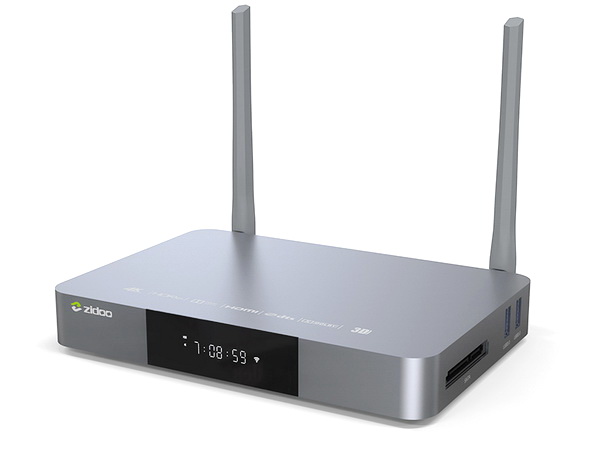
Black Friday is almost upon us and even though COVID-19 lockdowns will most probably result in reduced global sales numbers this year (probably since online orders have increased exponentially) but still i expect many people to get their brand new 4K and why not even 8K TV sets. Regardless of whether or not you'll be getting a new TV before the end of year there's but 1 undeniable fact, you need a good hardware media player for high-quality content playback. Current TV models do come with that function built-in but since keeping down the cost is what's expected by manufacturers these simply can't compete with aftermarket solutions. A great example of that is the Pro 4K II model by Dune HD i reviewed a few weeks back and since many of you asked today, I’ll be testing something quite similar, the Z9X 4K Media Player by Zidoo.
ZIDOO is a Professional Android STB Manufacturer, an advanced ARM multi-core industrial product and consumer electronics developer. Although only founded in 2014, our founders are highly experienced and seasoned in the OTT field and are committed to deliver expert professional technical services to a well-known brand at home and abroad. We specialize in OTT, DVB and Streaming Players, providing Supply Chain Service and Solutions. We maintain good relationships through cooperation with Mstar, Rockchip, Allwinner, Amlogic, Realtek and other original chipset factories. We also provide numerous TV BOX Brands with exported technology. ZIDOO is a unique brand with vast strengths through technology and innovation.
Unlike the Pro 4K II by Dune HD which came wearing the Realtek RTD1619DD SoC the Z9X by Zidoo wears the Realtek RTD1619DR SoC (hexa-core Cortex ARM A55 CPU with Mali G51 MP3 GPU) which fully supports the Dolby Vision VS10 standard/engine (12bit HDR with 68.7 billion colors). Zidoo has also equipped the Z9X with a total of 2GB of DDR4 RAM and 16GB of flash memory by Samsung (eMMC). This means that the Zidoo Z9X effectively has half the hardware resources the Pro 4K II gets shipped with so I’m very curious to see how it performs in comparison. Of course the Z9X is also based on the Android TV 9.0 OS and also supports 4Kp60 decoding/output, HDR/HDR10+, 3D, VP9/VP9 Profile 2, H264/H265, 10-bit HEVC and can playback pretty much all known video (MKV, MPEG-TS, TS, MPEG-PS, M2TS, VOB, FLV, 3GP, AVI, MOV, MP4, QT, ASF, WMV, BD ISO, BDMV, 3DMVC, DVD-ISO, VIDEO_TS) and audio (MP3, MPA, M4A, AAC, WAV, WMA, FLAC, CUE, DSD, OGG/VORBIS, WAVPACK, APE, ALAC, SACD, AC3, DTS, DTS-WAV) file formats. Moving to the connectivity part the Z9X comes ready with Bluetooth v4.2, RJ45 Gigabit Ethernet port, 802.11ac 2T2R dual-band WiFi, external SATA port, HDMI v2.0a output, HDMI v2.0 input, 2 USB 3.0 ports, USB 2.0 ports, Optical out (S/PDIF), A/V output and a RS232 port (for automation systems). So, time to see just how well the Zidoo Z9X does and whether or not it's a good alternative to the Pro 4K II model.
SPECIFICATIONS AND FEATURES

PACKAGING AND CONTENTS
The player is shipped inside a white box that has as expected the company logo, a large product picture and the main features at the front.
Turning the box around we see the product specifications printed in two languages.
Once again, we received the player wrapped inside a synthetic cover and placed in a formed piece of cardboard.
Inside the box you will find the Z9X media player with its power adapter, large remote control (AAA batteries included), SATA cable, HDMI cable and the product manual.
THE Z9X EXTERIOR
For the Z9X Zidoo has used a sandblasted aluminum enclosure which measures 189mm in length, 129mm in width and 25.5mm in height.
Strangely enough both the enclosure of the Z9X and the enclosure of the Pro 4K II are almost identical (the Antennas used are the main difference).
A small VFW/LCD screen is also located at the front of the enclosure right next to the Zidoo logo.

 The two USB 3.0 ports and the SATA connector are located on the right side whereas the left side has two perforated sections, a reset button and the two USB 2.0 ports.
The two USB 3.0 ports and the SATA connector are located on the right side whereas the left side has two perforated sections, a reset button and the two USB 2.0 ports.
Turning the enclosure around we see the two antenna mounts, RJ45 Gigabit LAN port, HDMI v2.0a output, HDMI v2.0 input, AV out (composite and analog stereo), optical S/PDIF output, RS232 port, DC in and an on/off power button.
Four rubber feet are located on the perforated base of the enclosure.
THE Z9X INTERIOR
To access the interior of the unit you just need to remove the 4 screws located beneath the rubber feet.
All of the components are located on the other side of the PCB and so here we see the large black heatsink placed both over the RTD1619DR SoC and the 2GB DDR4 RAM, 16GB flash memory module, button tagged as USB device (didn't check what this does) and the Wi-Fi Dual-band 2X2 11ac with Bluetooth 4.2 combo module.
I was actually surprised to see that Zidoo bundles a full size backlit remote control with the Z9X.
Z9X GUI PART 1
The GUI Zidoo is using may not look as "premium/professional" as the Dune HD one but thanks to its large letters and boxes it does seem very easy to navigate.
By default, the time zone is set in Shenzhen but you can easily change that just by going into that tab.
Zidoo ships the Z9X with a total of 15 apps by default.
I checked for firmware updates both when i first started using the Z9X and when i decided to take screenshots (not just to showcase the version used but also just in case).
From the media center you can browse all connected drives (either via USB or in the local LAN).
The home theater 3.0 app scans for content on connected drives and the downloads their Blu-Ray covers.
Of course, the movie plot and the movie rating are also provided just before you start playback.
The settings page is divided into 4 tabs the first of which allows you to change the frame rate mode, set what you'd like to be the default language when watching movies, enable 3D to 2D mode, automatically load specific language subtitles, set the Blu-Ray region, adjust audio offset and enable/disable the automatic download of subtitles.
From inside the display tab you can change the resolution and frequency, adjust the various color settings, set the screen scale, adjust the picture parameters (for both SDR and HDR), adjust HDR to SDR, enable/disable the MaxCLL and MaxFALL mode (if you encounter pink video output switch this off), choose the HDCP version, set the preferred time before the screen saver comes up and choose the desired wallpaper.
Z9X GUI PART 2
Inside the audio tab you can choose the preferred audio modes for both HDMI and SPDIF, enable/disable the downmix audio HD function, enable/disable sampling rate, and enable/disable USB audio.
The network tab is self-explanatory so from here you can setup WiFi and wired connectivity, use Bluetooth to connect with peripherals and finally you can enable/disable the DLNA DMR service.
From the final tab (other) you can change the GUI language, change the power key function, change the LCD screen brightness and displayed information, enable/disable HDD sleep, change the power mode, enable/disable HDMI CEC control, perform a firmware update, use the reset function and check the about for information on the player.
A cleanup app which can free RAM and storage is also pre-loaded in the player.
The Z9X obviously also supports YouTube and Netflix but neither is pre-loaded by default.
You can also add one extra apps on the lower bar by clicking on the + icon.
In case some of you are wondering the Z9X had no problem detecting the local NAS and the files stored in it.
AUDIO / VIDEO QUALITY
Even though i recently moved to the Nikon D3500 DSLR camera I’m still not confident it can reproduce the exact picture quality in total darkness so to counter this (at least partially) i have uploaded the full pictures on the server. Just like with past 4K media players i used the same testing suite (converted several UHD blu-rays to H.265 HEVC MKV including Shazam, Braveheart, Gemini Man - if you haven't watched it still you should if not for the movie then for picture quality - Batman Begins and Joker) and honestly i saw no visible difference between the Z9X and the Pro 4K II (both produced vivid colors, smooth and clear picture and crisp audio - as mentioned earlier if you encounter pink video output just disable the MaxCLL and MaxFALL mode, this worked for me). Just like with the Pro 4K II player by Dune HD i also decided to test the Z9X by Zidoo with several HDR H265 HEVC 10-bit demo files with bitrates all the way up to 400 Mbit/s and to my surprise even though the former managed to work fine with files up to 300 Mbit/s the latter just wouldn't play anything over 200 Mbit/s. Considering these two players are very similar (this could be related to the reduced RAM) i thought i was going to get the same results but obviously that wasn't the case (to most people this will not be an issue but some may like the ability to play HDR H265 HEVC 10-bit media with bitrates all the way up to 300 Mbit/s).
CONCLUSION
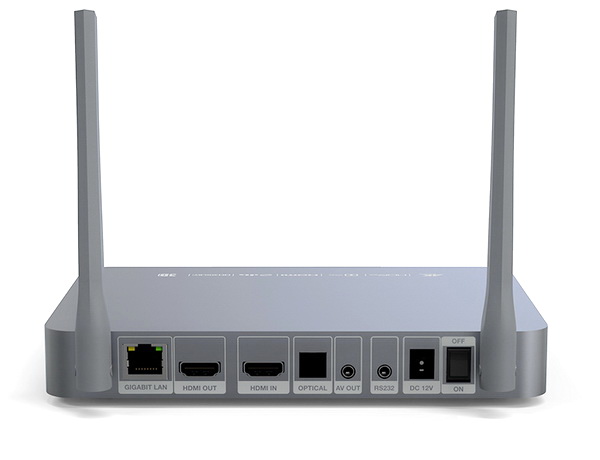
I haven't really kept tabs in the media player industry these past years so Zidoo pretty much flew beneath the radar for me. Now, i had heard the name a couple of years ago and i knew they were making media players but so are many other manufacturers from their parts. So yes, i basically didn't pay much attention which i somewhat regret seeing just how good the Z9X is. Everything works as advertised, image and audio quality is excellent, the amount of available settings is impressive and let's not forget the illuminated remote control which is not something we see a lot lately. By using the RTD1619DR chipset by Realtek the Zidoo Z9X also supports Dolby Vision VS10 and even though i truly don't expect this to be a deal breaker it's always nice to have support for more standards/engines. On the other hand, the Z9X is just a tad slower compared to the Pro 4K II (i suspect that's due to using half the RAM) and that's especially evident when launching high bitrate and resolution content (even though a couple of seconds here and a couple of seconds there shouldn't matter much to the majority of users). The android store is also not available by default, i didn't dig around enough to see if you can install it (you should if you have the APK via the Apkinstaller app) but still it would be nice to have from the get go.
Considering that the Pro 4K II model by Dune HD is its primary competition the how much you need to spend to get the Z9X matters quite a bit and here Zidoo doesn’t disappoint since currently it retails for USD244/206Euros (Futeko.com). Honestly, I do consider the Pro 4K II to be a better overall player but at the same time the price/performance ratio of the Zidoo Z9X is undeniably better and for that it gets the Golden Award.

PROS
- Build Quality
- Realtek RTD1619DR SoC (6 Core ARM A55 / Mali G55 MP3)
- 4Kp60/24 HDR+, Dolby Vision & VP9 Profile 2 Playback (Up To Well Over 100 Mbit/s)
- 802.11ac 2T2R Dual Band WiFi
- 4 USB Ports (2xUSB 3.0 / 2xUSB 2.0)
- External SATA Connector
- S/PDIF, HDMI & Analog Audio Outputs
- HDMI Input
- RS232 Port (Smart Integration)
- OS (Android TV v9.0)
- Backlit Remote Control
- Price (For Some)
CONS
- Loading Times (2GB DDR4 RAM?)
- Pink Screens (MaxCLL & MaxFALL Related?)
- Maximum Bitrate Support (200 Mbit/s)

 O-Sense
O-Sense





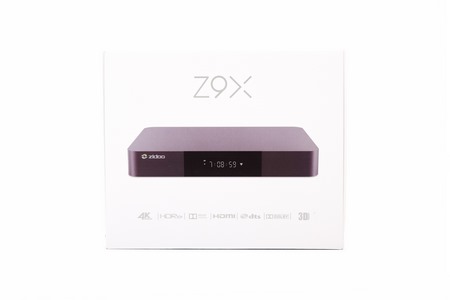



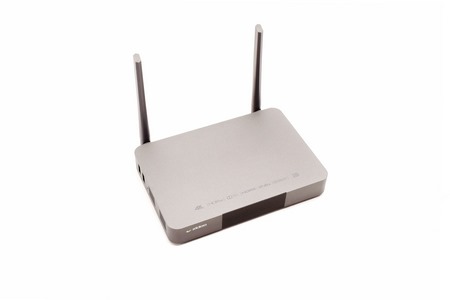











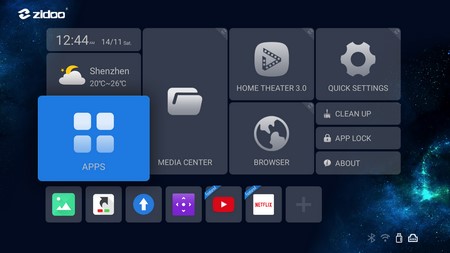






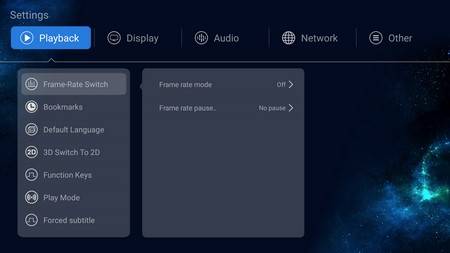
























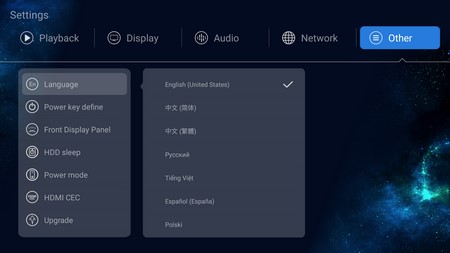






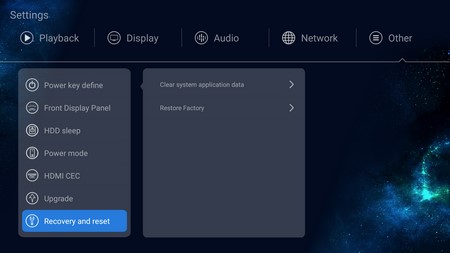















.png)

